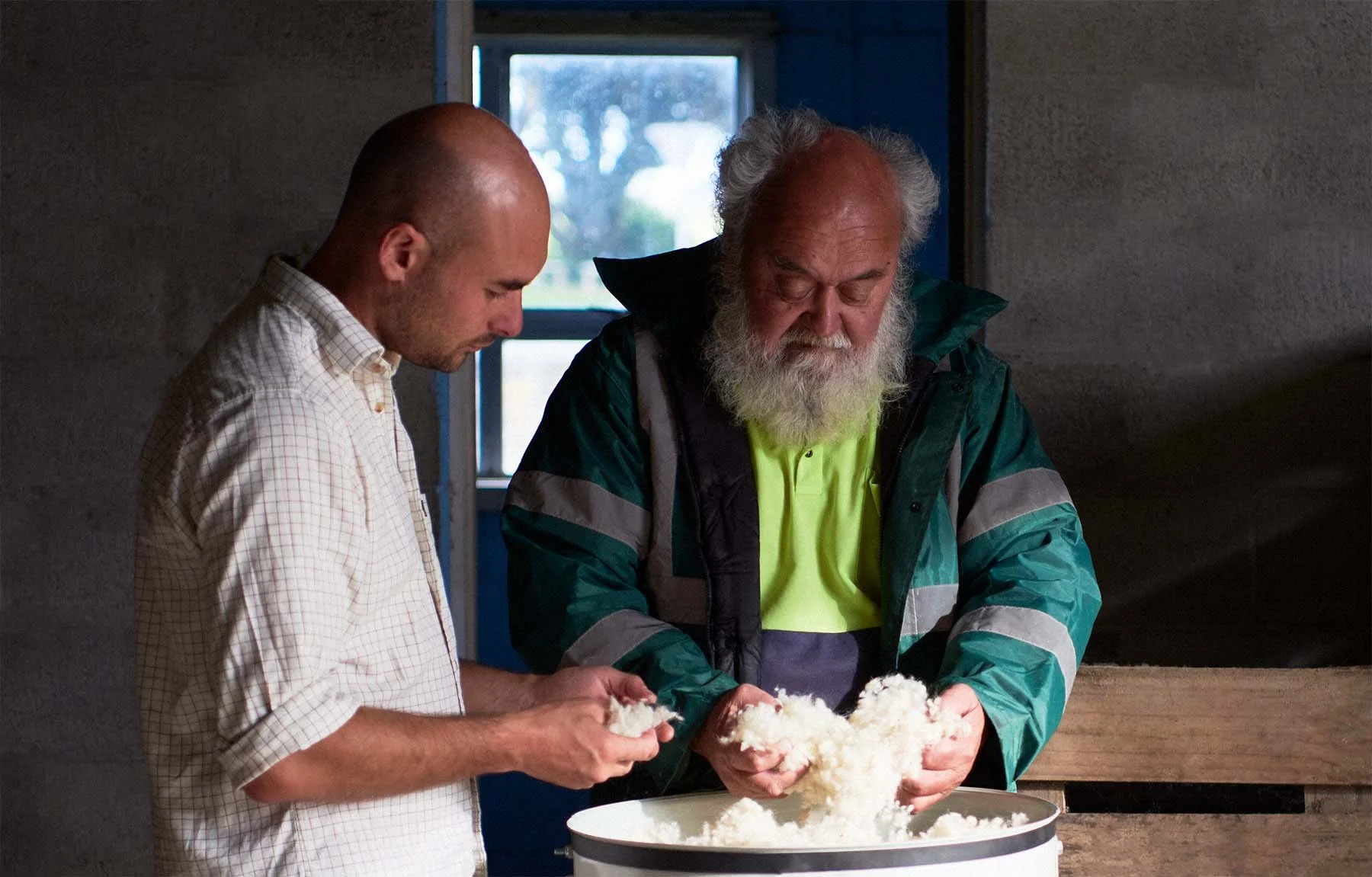The right v the wrong way to process wool
Pure strong wool is naturally breathable, resilient, fire-resistant and biodegradable, but harsh processing can strip it of these natural strengths, which turns the wool into a synthetic fibre. Discover why retaining wool’s innate properties is crucial for a superior, more sustainable product.
Key Takeaways
Over-processing can compromise wool’s natural performance traits (crimp, breathability, temperature regulation, fire resistance and durability).
“Safe practice” scouring, like that used by Wisewool™, uses low-chemical approaches, preserves wool’s structure, natural attributes and crimp. This leads to better product performance and longevity in mattresses, bedding, crafting (toys), furniture upholstery, acoustic insulation and more.
Gentle, sustainable manufacturing methods help wool retain its thermal regulation, fire resistance, resilience and biodegradability.
The Right and Wrong Way to Process Wool
Wool is one of nature’s finest fibres. Naturally breathable, thermo-regulating, fire-resistant, antimicrobial and regenerative. However, the journey from fleece to finished product can either preserve or diminish these qualities.
The Wrong Way involves harsh chemical treatments, aggressive bleaching, excessive heat or mechanical over-stressing. This weakens or flattens the wool's natural crimp, compromises the cuticle and moisture-wicking ability, and reduces elasticity. Ultimately, this weakens wool’s natural fire resistance, temperature regulation and durability properties.
The Right Way uses gentle, low-impact scouring and mindful manufacturing to keep the fibre structure intact. It also maintains wool's natural attributes and preserves the natural crimp. The result is wool that performs as nature intended: breathable, resilient, and naturally fire resistant.
How poor processing impacts wool
Chemistry: Wool’s most valuable strengths lie in its structure and chemistry. Over-processing can quickly undermine these benefits.
Cuticle: The cuticle is the outermost layer of a wool fibre, made up of overlapping scale-like cells. It acts as a protective barrier and is coated in a natural wax (lanolin), making the fibre water-repellent and resistant to dirt and wear.
Crimp & Loft: Wool’s natural waviness traps air for insulation, elasticity, and springiness. If treatments are excessive, fibres flatten or break, leading to reduced loft, poorer temperature regulation, and a shorter useful lifespan.
Lanolin Content: Provides water repellency and softness. Even traces of this waxy substance help wool resist dirt and maintain comfort. Over-scouring can strip lanolin entirely, making the wool more prone to wear.
Keratin Strength: Gives wool its durability and elasticity. High heat, harsh chemicals, or bleaching degrade these keratin bonds, leaving fibres brittle and susceptible to breakage.
Moisture Management: Relies on wool’s hygroscopic nature. Damaging the cuticle impairs the fibre’s ability to handle moisture wicking effectively, so it diminishes the wool's ability to offer comfort in varying temperatures and humidities.
Biodegradability: Sets wool apart in an era when many fabrics linger in landfills. Wool naturally breaks down, returning nutrients to the soil. However, blending it with synthetic fibres or adding non-biodegradable components and chemicals prevents this natural process.
Fire Resistance: Another vital advantage. Wool resists ignition, burns slowly, does not melt and can self-extinguish. The keratin protein structure and natural moisture content of wool are the primary contributors to fire resistance.
How does ‘safe practice’ processing benefit product performance?
Strict safe-scouring protocols ensure wool retains its natural breathability, bounce, and fire resistance. This benefits mattresses and bedding, where retained crimp improves cushioning and airflow.
Upholstery and furniture benefit from stronger structural integrity and shape-holding over time.
“Crafts and quilting projects benefit from the loft and resilience of wool that hasn’t been overly processed. When the fibre stays springy and breathable, it lives up to its title as “the world’s best natural dehumidifier”
How is the quality of strong wool preserved during processing?
Strong wool’s natural properties are best protected through gentle, low-impact methods. Wisewool™ is scoured at controlled temperatures using biodegradable detergents, avoiding harsh chemicals that can strip away fibre integrity.
No bleaching means no chlorine, which helps retain wool’s natural colour, cuticle health and water repellency. This careful approach keeps the fibre strong, breathable and biodegradable, just as nature intended.
Why does sustainable processing matter?
Sustainable wool isn’t just about where it comes from. It’s also about how it’s treated. Minimally processed strong wool performs longer, breaks down naturally at the end of life and avoids synthetic enhancers.
It also supports local jobs in farming and processing. Choosing cleaner methods reduces chemical use, waste and pollution, while preserving the fibre’s strength and circular potential.
Why Traceability Matters
Without traceability from the farm to the final product, there is no way to know what type of processing has taken place. On average, a strong wool fibre changes hands eight times, meaning that there is no way to trace the quality or the processing of the final wool that arrives at your factory. Wisewool™ is different as it provides traceability from the farm to the finished product, so you can be assured that you are getting the finest strong wool available.
Final Thoughts
Wool works best when it’s left close to how nature made it. Wisewool™ embraces this by avoiding synthetics and harsh treatments. WiseLayer™ and WiseFill™ products prove that wool can stay resilient, breathable and planet-friendly without compromise.
Contact us wot find out how Wisewool™ can increase your profit and customer satisfaction.

